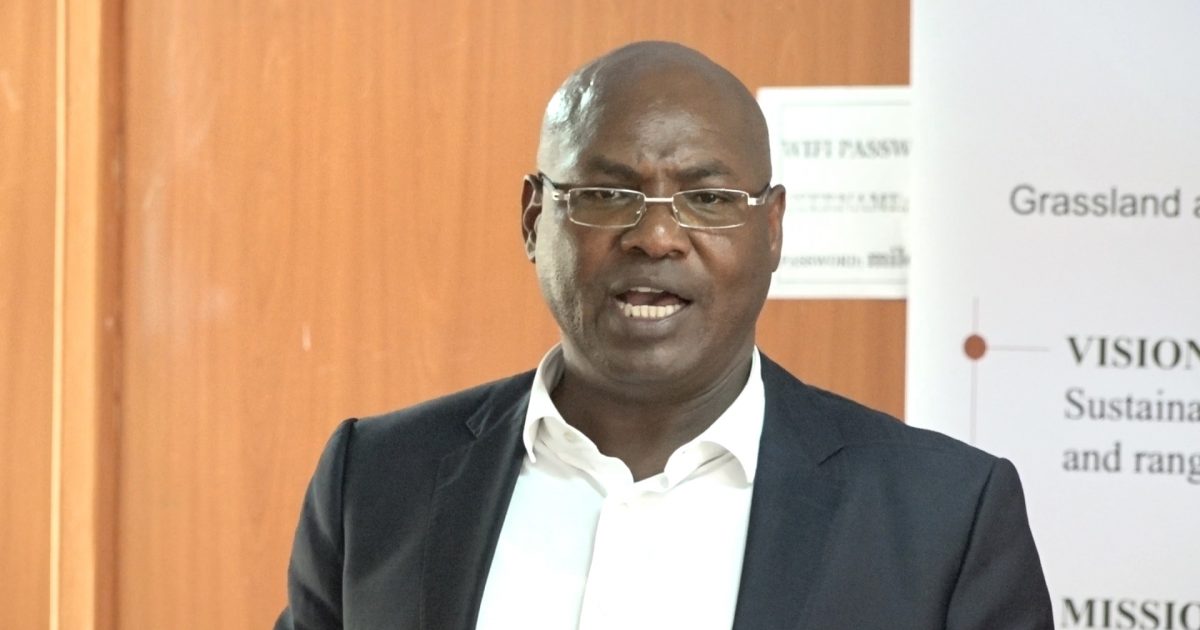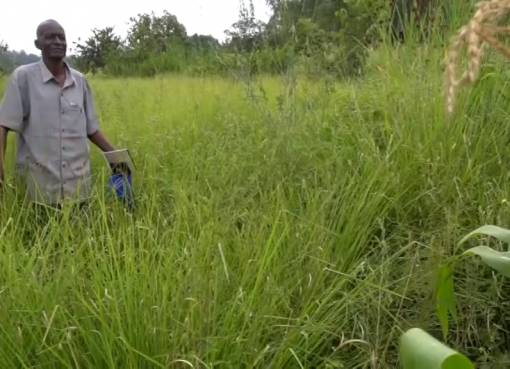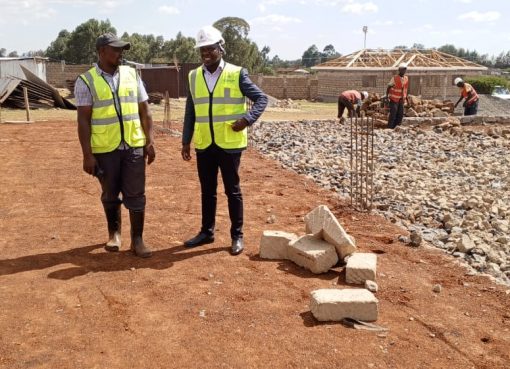The State has singled out climate change and overgrazing as new challenges threatening the existence of Kenya’s grasslands and rangelands.
Principal Secretary State Department for Livestock, Ministry of Agriculture, Livestock, Fisheries and Irrigation Mr Harry Kimtai, said the situation was being aggravated by a growing population that is looking for more settlement areas, mainly within these grasslands and rangelands.
Mr Kimtai noted that in Kenya, grassland covers 83 per cent of the land, supporting 70 per cent of livestock and 83 per cent of wildlife, and there are over 10 million people living in these areas.
Data from the Department of Livestock shows that the rangelands support about 70 per cent of the national livestock population and 90 per cent of wildlife that is vital to the tourism industry.
While stating that the National Government has put in place a five-year Strategic Plan to manage and develop grassland and rangeland whose implementation is projected to cost approximately Sh9 billion, the Principal Secretary challenged County Governments to include in their County Integrated Development Plans (CIDPs) strategies aimed at sustainable use and management of grasslands and rangelands.
The National Government’s Strategic Plan, developed by a team from the State Department for Livestock, Kenya Agricultural and Livestock Research Organization (KALRO) and the University of Nairobi is being implemented in collaboration with key stakeholders, under the newly formed Grassland and Rangeland Society of Kenya (GRASK).
GRASK was formed as part of resolutions of the joint 24th International Grassland and 11th International Rangeland Virtual Congress held in October last year, to help address challenges and develop and manage grasslands and rangelands in Kenya.
Mr Kimtai who was flanked by Kenya Agricultural Livestock Research Organization (KALRO) Director General Dr. Eliud Kireger spoke at a Nakuru hotel during a consultative forum for Agricultural Officers from West Pokot, Turkana, Narok, Nakuru, Baringo and Elgeyo Marakwet counties.
The meeting convened by GRASK was also attended by representatives from research and educational institutions, agricultural experts and small holder and large scale livestock farmers from the six counties.
The Principal Secretary indicated that the eco-systems, besides being important sources of fodder, were vital centres of biodiversity. He added that some world-renowned grasses including brachiaria species have evolved from this eco-system here in Kenya.
“We have noticed degradation in the rangelands and grasslands especially due to overgrazing. Consequently, communities in the affected regions do not enjoy food and nutrition security. We have to look at ways and means to protect this precious eco-system. In some areas such as Baringo, there is also a change of vegetation where desirable grasses are being replaced by invasive plant species,” said Mr Kimtai.
He noted that the ecosystem also played a vital role as wildlife habitats, watersheds, recreational areas, source of minerals and plant materials among other associated uses. Despite these benefits, he pointed out that the lands have continued to lack the basic foundations for social and economic development and the expected roles of ensuring food and nutrition security.
“We are keen to partner with county governments through programs such as Kenya Livestock Commercialization Program to upscale production of pasture as one way of conserving grasslands and rangelands. We are working together with stakeholders to address the issue of landscape restoration, where degradation has taken place,” stated the Principal Secretary.
On the five-year Strategic Plan, Mr Kimtai said the document is guiding the National Government in developing regulatory framework, policies and legislations for the proper management of grassland and rangeland resources in the country.
It contains eight strategic issues of climate risk and community resilience, inadequate support of the community and leadership governance structures, lack of legal framework to regulate services providers in the grasslands and rangelands, inadequate resources, professional capacity, information system and sharing, technological development and innovation and resources for grasslands and rangelands development.
Kimtai further observed that the strategies are guiding the government and biodiversity stakeholders to find solutions into serious challenges facing the ecosystem depended on by human and wildlife populations.
Dr. Kireger expressed concern that productivity of the grasslands and rangelands was rapidly declining due to climate change resulting in environmental variability, leading to frequent droughts, fires, floods, land degradation and loss of biodiversity.
He stated that one of the biggest challenges in managing rangelands is sustainability.
“This is because our grass dries very fast and regeneration becomes a problem. It takes a long time to regenerate, especially where the rangeland has been overgrazed. There is a lot of connection between research and sustainability of our rangelands, and we need to take our pastoralists through these challenges and how to overcome them,” The KALRO Director General stated.
Dr Kireger said KALRO had developed four range grass varieties. They include KBK, Cenchrus ciliaris Var, MGD1 and Cenchrus ciliaris var.
“The move will facilitate commercialization of the varieties and make the seeds readily available to farmers for the establishment of new pasture fields and restoration of degraded rangelands. KALRO has also collected and conserved a gene bank of over 300 grass accessions from northern and southern Kenya rangelands. It is from this germplasm that more cultivars and varieties will be developed,” Kireger said.
Dr. Kireger noted that the culture of people in the rangeland is also changing as they opt to settle in one place instead of the nomad lives they were previously used to.
“People are settling down particularly in the north. Villages are now coming up because they can no longer move from one place to another as the rangeland is degraded. This means they are becoming more and more reliant on food aid/support. We, therefore, need to equip those pastoral communities with new skills to support themselves otherwise the Gross Domestic Product will go down every time we have a drought situation,” he opined.
Kireger indicated that urgent measures and interventions are required to protect the rangeland resources and enhance their sustainable use.
He further added that investment in the rangelands monitoring, rehabilitation and improvement will greatly contribute to the attainment of food and nutritional security as envisaged in the Constitution of Kenya and the Vision 2030 and in line with the global Sustainable Development Goals.
Management of rangeland and grassland ecosystems, observed the Director General, also required cutting edge technologies and innovation.
Kireger added that the technologies and innovations include high yielding and adapted grasses for high rainfall highland and the rangelands, integrated soil fertility management, conservation, agriculture, irrigation and drainage management technologies, agroforestry systems and bio-energy system technologies.
“Some of these technologies have potential to revolutionize the livelihood for the people who depend on the grasslands and rangelands. Specifically, the adoption of high yielding and adapted grasses is supporting the emerging and commercially viable hay value chain that is supporting the livelihoods of people depending on the grassland and rangeland resources. We are ready to partner with GRASK towards scaling and transfer of these important technologies and innovations,” he added.
He said KALRO scientists are currently improving and disseminating information on ways of increasing productivity of climate- smart livestock genotypes like Sahiwal, Boran cattle, Dorper sheep, Red Maasai and Galla goats to farmers in semi-arid and arid ecosystems.
By Jane Ngugi and Dennis Rasto




